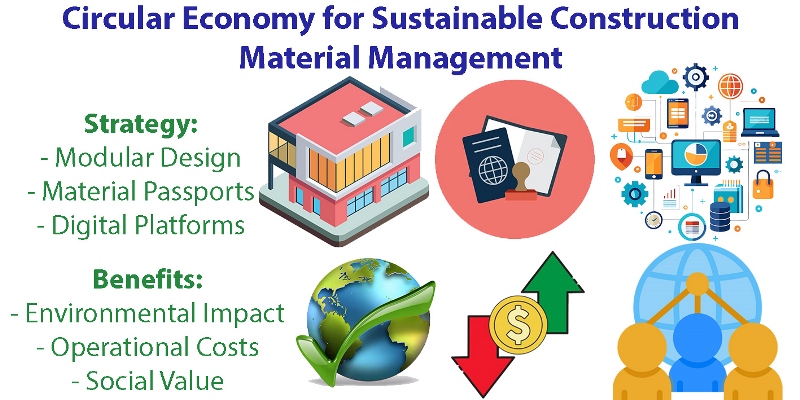Most read content
Partner Journal
Previous issue | Next issue | Archive
Volume 12 (4); December 25, 2022
|
|
Research Paper
Determination of Earthquake Behaviors of a Reinforced Concrete Building with and without Earthquake Base Isolation
Kaplan B, and Sahin F.
J. Civil Eng. Urban., 12(4): 51-60, 2022; pii:S225204302100008-12
DOI: https://dx.doi.org/10.54203/jceu.2022.8
Abstract
There are many fault lines within the borders of our country, especially the North Anatolian Fault line. For this reason, earthquake resistant structural design is a very important issue in order to prevent possible economic losses after earthquakes, especially the life safety of people living in our country. The main goal in earthquake insulation, which is a new approach in earthquake design of buildings, is to reduce the possible effects on the structure by placing flexible elements in the horizontal direction and rigid in the vertical direction, by greatly reducing the earthquake loads and accelerations acting on the superstructure. In this study, the earthquake behavior of the buildings, which were designed by the Housing Development Administration of the Republic of Turkey and designed as a base isolation support, and the structures designed according to the principles determined in the Turkey Building Earthquake Code 2018 by using base isolation, were determined according to the non-linear time history analysis method. The behavior changes of the structure designed using earthquake base isolation compared to the conventional structure were examined, and the period values, floor accelerations and base shear forces of the two structures were compared. As a result of the results obtained, the positive effects of the period increase and the decrease in floor accelerations in the earthquake insulated structure were revealed.
Keywords: Earthquake, Base Isolation, Non-linear time history analysis
[Full text-PDF] [Crossref Metadata] [Export from ePrints]
|
|
Research Paper
Value Pertinence for Residential Property Investments in Christian Mission Estates: An Investigation of Canaan City in Ogun State, Nigeria
Akinjare, O.A. Akinjare, V.A., Ayedun, C.A., Oluwatobi, O.A. & Alexander, M.N.
J. Civil Eng. Urban., 12(4): 61-69, 2022; pii:S225204302100009-12
DOI: https://dx.doi.org/10.54203/jceu.2022.9
Abstract
The rapid expansion and urbanization of Lagos state of Nigeria due to uncontrolled rural - urban migration seems to have succeeded in transforming the peri-urban areas of Ota, Ogun state into a mini economic hub, thus propelling property values skywards. The present study ascertains if passing rents, as well as sales value for the various apartments in Canaan city estate as charged by the project developer, is overpriced, and underpriced or fair-priced. The rental data collected from the residents of the estate were compared with rental opinion obtained from practicing estate surveyors and valuers in Ogun State. 240 questionnaires were administered to residents of the estate while 22 questionnaires were administered to registered estate surveying and valuation firms. Interviews and questionnaires were deployed to solicit data from the Physical Planning Department (PPD) being the managers of the estate. The retrieved data were then collated and presented using figures and Tables. Findings showed that the passing rents for all cadres of residential apartments in the estate were discounted with the most discounted apartment type being the 2-bedroom luxury flats and the least discounted apartment type being the 4-bedroom semi-detached houses. For sales value, findings showed that the high end apartments – the detached houses, semi-detached and also the 3-bedroom terrace houses were hugely discounted. Unfortunately, the 1-bedroom and 2-bedroom flats were the least discounted while the 2-bedroom luxury flats and 3-bedroom flats were either within range or slightly overpriced. The study concluded that the passing rents were underpriced due to the income nature of tenants and subsequently, the sales value proposed by the developer of the estate was underpriced. The study recommended an upward review of sales prices should the estate proprietor still continue with the sales of its apartment within Canaan city.
Keywords: Residential property, Investment, Rental and Capital values, Value appropriateness, Estate Surveyors, Valuers.
[Full text-PDF] [Crossref Metadata] [Export from ePrints]
|
|
Research Paper
Circular Economy for Sustainable Construction Material Management
Firoozi AA and Firoozi AA.
J. Civil Eng. Urban., 12(4): 70-81, 2022; pii:S225204302100010-12
 DOI: https://dx.doi.org/10.54203/jceu.2022.10
DOI: https://dx.doi.org/10.54203/jceu.2022.10
Abstract
The construction industry is a major contributor to global resource consumption and environmental degradation, emphasizing the need for sustainable material management. This study explores the integration of circular economy (CE) principles into the construction sector to enhance resource efficiency, reduce waste, and promote the reuse and recycling of materials. We review current practices identify barriers to CE adoption, and propose innovative strategies such as modular design, material passports, and digital platforms for material tracking and exchange. The environmental, economic, and social benefits of adopting these principles are examined through detailed case studies of pioneering projects that showcase significant reductions in environmental impact, operational costs, and enhanced social value. The paper highlights the potential of CE to transform the construction industry towards sustainable practices that align with the Sustainable Development Goals (SDGs) on responsible consumption and production, and sustainable cities and communities. The study concludes by discussing the challenges and opportunities in mainstreaming circular economy practices within the industry, urging a collaborative approach among stakeholders for successful implementation.
Keywords: Circular Economy, Construction Materials, Sustainable Development, Waste Reduction, Resource Efficiency, Civil Engineering
[Full text-PDF] [Crossref Metadata] [Export from ePrints]
Previous issue | Next issue | Archive
This work is licensed under a Creative Commons Attribution 4.0 International License (CC BY 4.0)![]()





